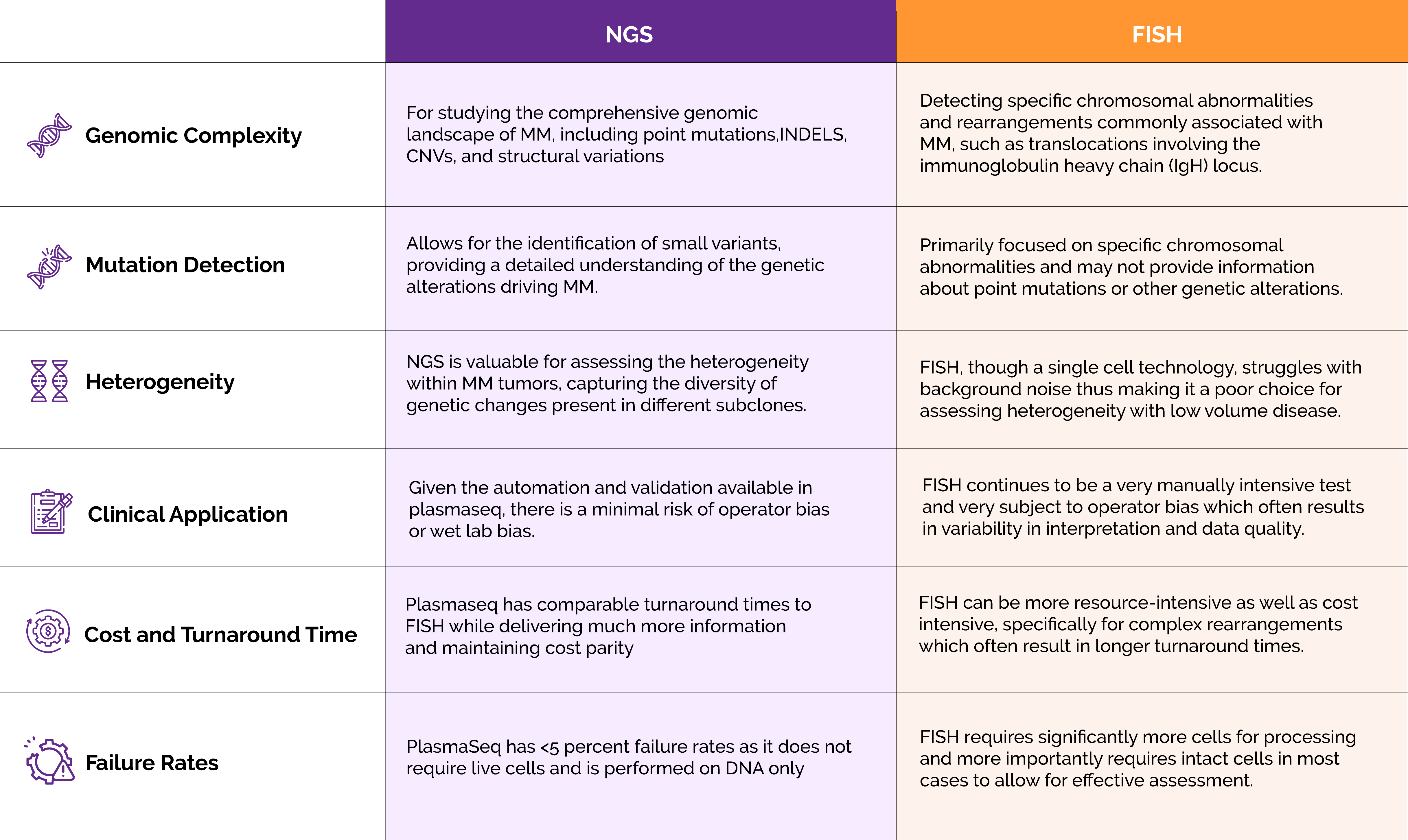PlasmaSeq

Discover the Undiscovered with NGS Based Assay for Multiple Myeloma
Next-generation sequencing (NGS) has played a crucial role in advancing our understanding of various diseases, including cancer.
In the context of Multiple Myeloma (MM), NGS has been employed to unravel the genomic landscape, identify key genetic mutations, and guide personalized treatment strategies. NGS technologies continue to evolve, and their application in multiple myeloma research contributes to a more comprehensive understanding of the disease, leading to improved diagnostic and treatment strategies.

Application of Multiple Myeloma by NGS:
- Somatic Mutations: NGS helps identify somatic mutations in MM genomes, providing insights into the genetic alterations that drive the disease. Relevant mutations which result in non-functioning genes such as TP53 as well as small deletions in genes in the 1p region are missed.
- Copy Number Variations (CNVs): NGS can detect amplifications or deletions of specific genomic regions, aiding in the identification of oncogenes or tumor suppressors involved in MM unlike traditional FISH methodologies. This allows much better characterization of hyperdiploidy.
- NGS allows the tracking of clonal evolution over time, helping to understand how the genetic makeup of MM tumors changes during disease progression and in response to treatment. Using these SNP events, potential somatic testing and MRD measurement can be done even with significantly fewer plasma cells.
- Given the ability of Plasmaseq to identify the entire spectrum of IgH translocations, copy number variants across the genome and small variant detection across all myeloma genes, we are able to stratify your myeloma better than any other technology in the world.
Our unique chemistry and extensive validation allow us to obtain all the above noted information from DNA ONLY! This assumes great significance as most similar tests will require RNA which is very unstable during transport and can result in false negative results.

